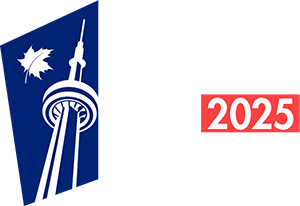Assessment Information Requests
With properties frequently undergoing changes and market conditions continuing to evolve, MPAC requires up-to-date property information to maintain an accurate database, supporting the delivery of annual assessment rolls and quality assessments.
Each year, MPAC requests property information from property owners and/or their representatives as part of our Assessment Information Request Program. Having complete, accurate and current market and property data is critical to the valuation process, and property owners play a vital role by providing this information to MPAC.
Where property information is required, MPAC will send an information request letter outlining what information is needed, when property owners are required to submit the information to MPAC, and details on how to submit it.
Compliance requirements
Property owners are required to comply with MPAC’s requests by submitting information through the Assessment Information Request portal in AboutMyProperty or by providing completed forms through hard copy paper or email submission. We also offer B2B options as well as other file-sharing solutions. To learn more about file-sharing solutions, please contact AIR@mpac.ca.
Property owners are required to comply with MPAC’s information request as outlined in section 11 of the Assessment Act. Learn more about MPAC’s Authority to Collect Information.
2025 Campaign schedule
| Property type | Request date | Submission deadline |
|---|---|---|
| Pipeline | January 27 | March 3 |
| Grain Elevator | March 10 | April 28 |
| Property Income and Expense Return (PIER): Commercial/Industrial, Golf Courses, Hotels, Land Lease and Mobile Homes, Large Resorts, Long-term Care Facilities, Mixed Use Properties, Motels, Multi-Residential and Retirement Homes | May 20 | July 14 |
| Seniors and Persons with a Disability | May 26 | July 28 |
We are committed to working with you to improve the way we collect this data. If you have suggestions, please email us at AIR@mpac.ca.
Campaigns
Under the Assessment Act, pipeline companies are required to submit a report detailing all of their pipelines to MPAC by March 1. MPAC also requests additional information to ensure an accurate assessment of the pipeline holdings.
Resources:
To arrive at an accurate assessed value and tax classification for licensed grain facilities in the province, owners are required to complete MPAC’s online questionnaire by April 28, 2025. A returned questionnaire may replace the need for an on-site inspection.
Resources:
MPAC’s largest assessment information request campaign is the Property Income and Expense Return (PIER), where we request rental, income and expense information from income-generating properties, such as retail stores, hotels, motels, multi-residential properties, golf courses, offices and industrial malls.
Each year MPAC sends approximately 35,000 request letters as part of PIER to eligible properties to inform our analysis. Collecting information annually allows MPAC to identify and track trends in revenues, expenses, capital expenditures, fair market rents, vacancies and more over time.
Property owners have an important role to play in the valuation process including the submission of income information through the formal collection process. The requirement for owner compliance is outlined in section 11 of the Assessment Act.
NOTE: The deadline to submit your 2024 PIER information has passed. More information about the 2025 campaign will be available soon.
Resources:
Properties that have undergone a change to accommodate a senior or a person with a disability are eligible for a property tax exemption. In order to continue to qualify for this exemption, property owners must respond to MPAC’s information request to ensure they meet the criteria.
Resources:




